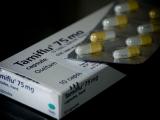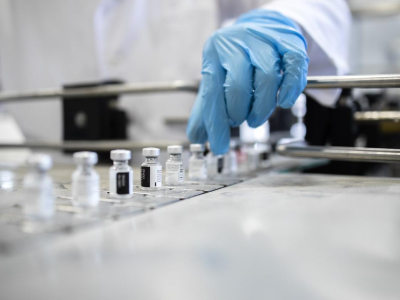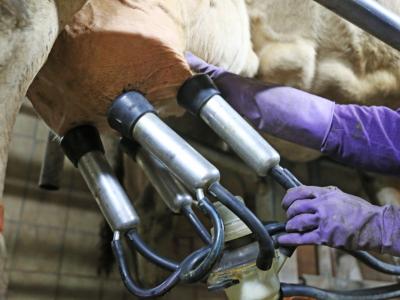Nov 25, 2008 (CIDRAP News) Hospital workers who followed official infection control guidelines for pandemic influenza for 1 day used 10 times as many gloves as usual, generated three times as much clinical waste, and found that many tasks took longer than normal, according to a new report.
The 24-hour exercise in a British hospital also revealed various other challenges, including that hospital workers lacked confidence in their ability to follow infection control guidelines, felt uncomfortable wearing surgical masks, and felt that wearing personal protective equipment (PPE) hindered communication, according to the report, published online by the Journal of Infection Control.
"Healthcare in a pandemic situation is not simply a case of applying pandemic influenza infection control guidance to current practice; hospitals need to consider changing the way care and services are delivered," states the report by N. F. Phin of Cheshire and Merseyside Health Protection Unit, Chester, UK, and colleagues.
British health authorities issued infection control guidance for pandemic flu in October 2005, the report says. The guidelines call for healthcare workers (HCWs) to wear gloves, a plastic apron or gown, and a surgical mask when coming within 3 feet of pandemic flu patients. They recommend the use of an FFP3 respirator (equivalent to a US N-99 respirator, designed to stop 99% of small airborne particles) and eye protection during aerosol-generating procedures.
These guidelines "involve major changes to the way care is currently delivered and the use of infection control measures and PPE on a scale far beyond that experienced in the recent past," Phin and colleagues write. "Few currently employed healthcare workers have experience of a pandemic and the lack of a detailed operational data makes implementation of the current guidance challenging."
Basic PPE much more in demand
To assess the operational challenges, the researchers set up their 24-hour exercise on a 29-bed general medical ward that received mostly respiratory and gastrointestinal patients. The staff, including 14 nurses, 5 healthcare assistants, and 4 domestic workers, was briefed in advance on pandemic flu, infection control procedures to be used, and how to don and remove PPE, including FFP3 respirators.
During the exercise, conducted in November 2006, 17 infection control nurses (ICNs) monitored staff compliance with the infection control guidance, gave advice when needed, and recorded issues that arose.
A key finding was that HCWs used far greater than normal quantities of basic PPE during the exercise: about 1,200 pairs of gloves, 650 surgical masks, and 750 disposable aprons. This suggests that during the height of a pandemic, the use of aprons, gloves, and masks would increase 13-fold, 10-fold, and 450-fold, respectively, the report says.
On the other hand, it says the quantities of high-level PPE used were much lower than expected: 13 gowns, 13 FFP3 respirators, and 13 pairs of goggles. Expecting a much greater need, the team had ordered 500 respirators for the exercise.
On the basis of World Health Organization (WHO) guidance at the time, the investigators had expected a much smaller need for basic PPE and a greater need for high-level equipment. "WHO guidance overestimates the use of high-level specialist PPE and underestimates the amount of basic PPE required," they write.
Along with the surge in basic PPE used came a major increase in waste generated: 18 48-liter bags, versus four to six bags on a normal day, the report says.
The team also recorded traffic through the ward and found that at least 115 different workers made 167 visits during the exercise. "This level of traffic would be highly undesirable during a pandemic, and as a consequence of the exercise, operational assumptions and plans are to be reappraised in order to minimize unnecessary staff movement," they write.
Workers' perceptions
Twenty-one of the 23 ward staff members completed a questionnaire about the exercise. Among the results: Fourteen (67%) of them found it uncomfortable or very uncomfortable to wear a surgical mask; 17 (81%) said their duties took longer; and 9 (43%) felt that talking with others was more difficult. In addition, three workers reported that wearing a mask seemed to affect their hearing, very likely showing the importance of nonverbal cues in communication.
The ICNs on hand during the exercise found that compliance with the infection control guidelines was good, but they also noted plenty of concerns and areas of uncertainty. A few examples included problems with donning and removing PPE, patients being kept waiting while HCWs put on PPE, decontamination of ward equipment such as telephones and door handles, and hand hygiene after contact with inanimate objects.
Overall, the staff had a good grasp of basic infection control steps, but they were unsure about the extra measures recommended in a pandemic, the report says, adding, "Uncertainty was also evident in participating staff as ICN observers occasionally gave conflicting advice."
Supporting what some of the staff reported, the investigators also found that "many tasks and routine procedures took much longer than usual, despite the rostering of additional staff; this was particularly obvious at night when the drug round took twice as long as usual to complete."
Despite the challenges pointed up by the exercise, the staff felt that it increased their confidence about dealing with a flu pandemic, the researchers write. They conclude, "We believe that this is the first simulation of its kind in the UK, and that many hospitals would benefit from undertaking similar exercises in order to gain confidence and understanding of their own operational needs."
Study 'generalizable' to US hospitals
Marcia Patrick, RN, MSN, CIC, infection control director with the MultiCare Health System in Tacoma, Wash., called the study very interesting and said the big increase in usage of PPE impressed her as the most important finding.
"I believe it [the study] is generalizable to US facilities, particularly the increased amount of isolation supplies that would be needed in a pandemic," she told CIDRAP News.
"Where do you store all that?" Patrick asked. "Most hospitals, just like grocery stores, don't have big storerooms of supplies. A lot of places have gone from a 24-hour supply to 72 or 96 hours, but we don't have stocks and stocks of stuff."
"Another good point is that most of the masks and gloves and gowns are made in China or some of those other countries, and the likelihood of a supply shortage [in a pandemic] is enormous," she added.
The volume of trash is also a concern, said Patrick, who is a board member of the Association of Professionals in Infection Control and Epidemiology (APIC). She said hospitals might consider using trash compactors to deal with that, but compactors might cause aerosolization of pathogens, and heavier trash containers might increase injury risk for workers.
She said she wasn't surprised by the finding that many workers found the surgical masks uncomfortable. "It's difficult for staff not used to wearing the things to wear them all shift long," she said.
As for respirators, people who have asthma or other respiratory problems find it very difficult to wear them for more than a few minutes, she added. Because of that, her own healthcare system uses powered air-purifying respirators (PAPRs), which blow air through a HEPA filter and into a hood worn by the worker. The device has a clear face shield and does not require fit testing.
Patrick said the British guidelines differ in a couple of respects from those used in her institution. One was that the former do not call for eye protection for HCWs in close contact with infectious patients.
"I would want mask and eye protection to be linkednot just used for cough-inducing procedures," she said. "We have found that requiring masks with eye protection and providing the single-unit items has increased compliance."
Phin NF, Rylands AJ, Allan J, et al. Personal protective equipment in an influenza pandemic: a UK simulation exercise. J Hosp Infect 2008 (early online publication) [Abstract]
See also:
Oct 18, 2006, CIDRAP News story "HHS backs respirator use in caring for pandemic flu patients"





















